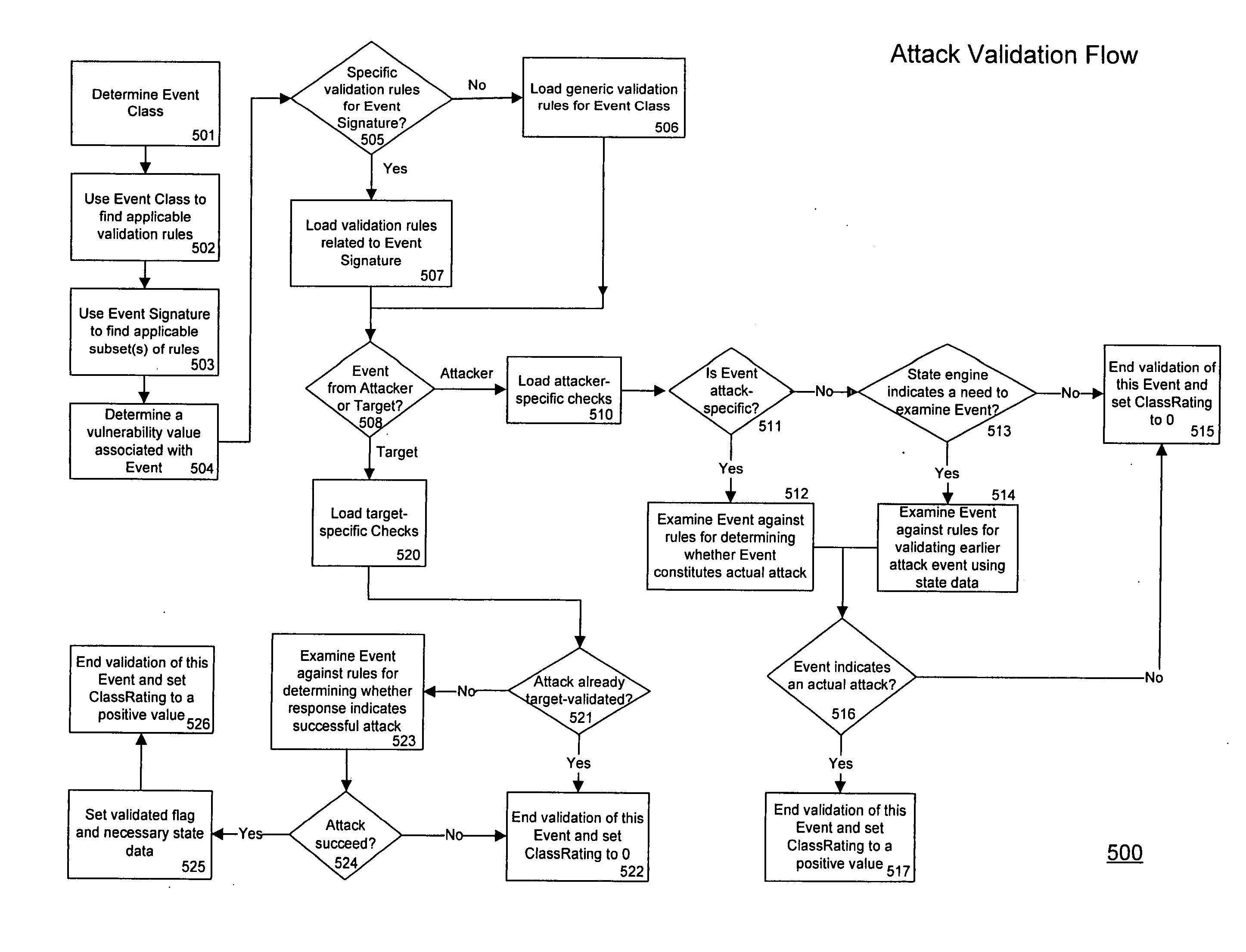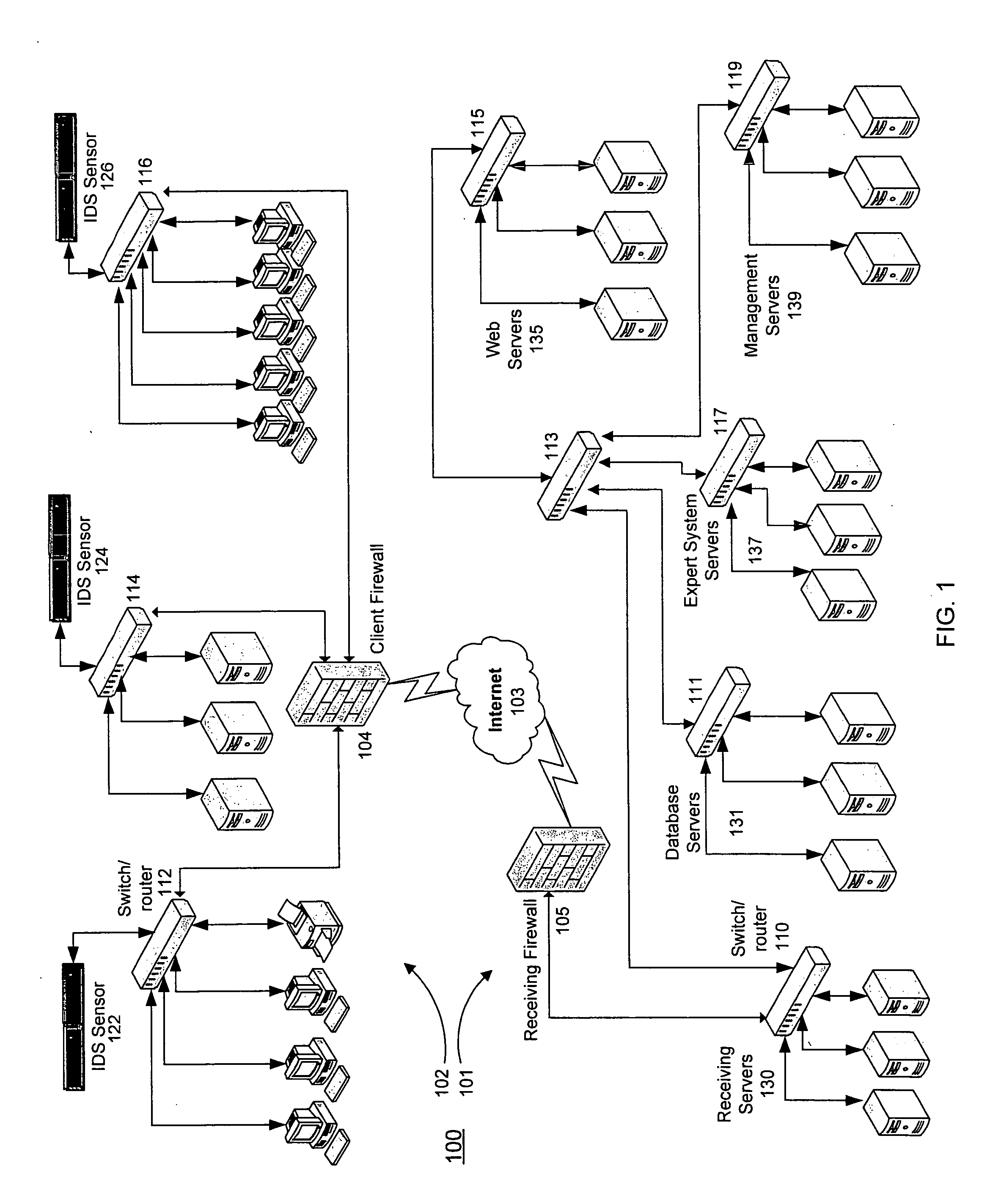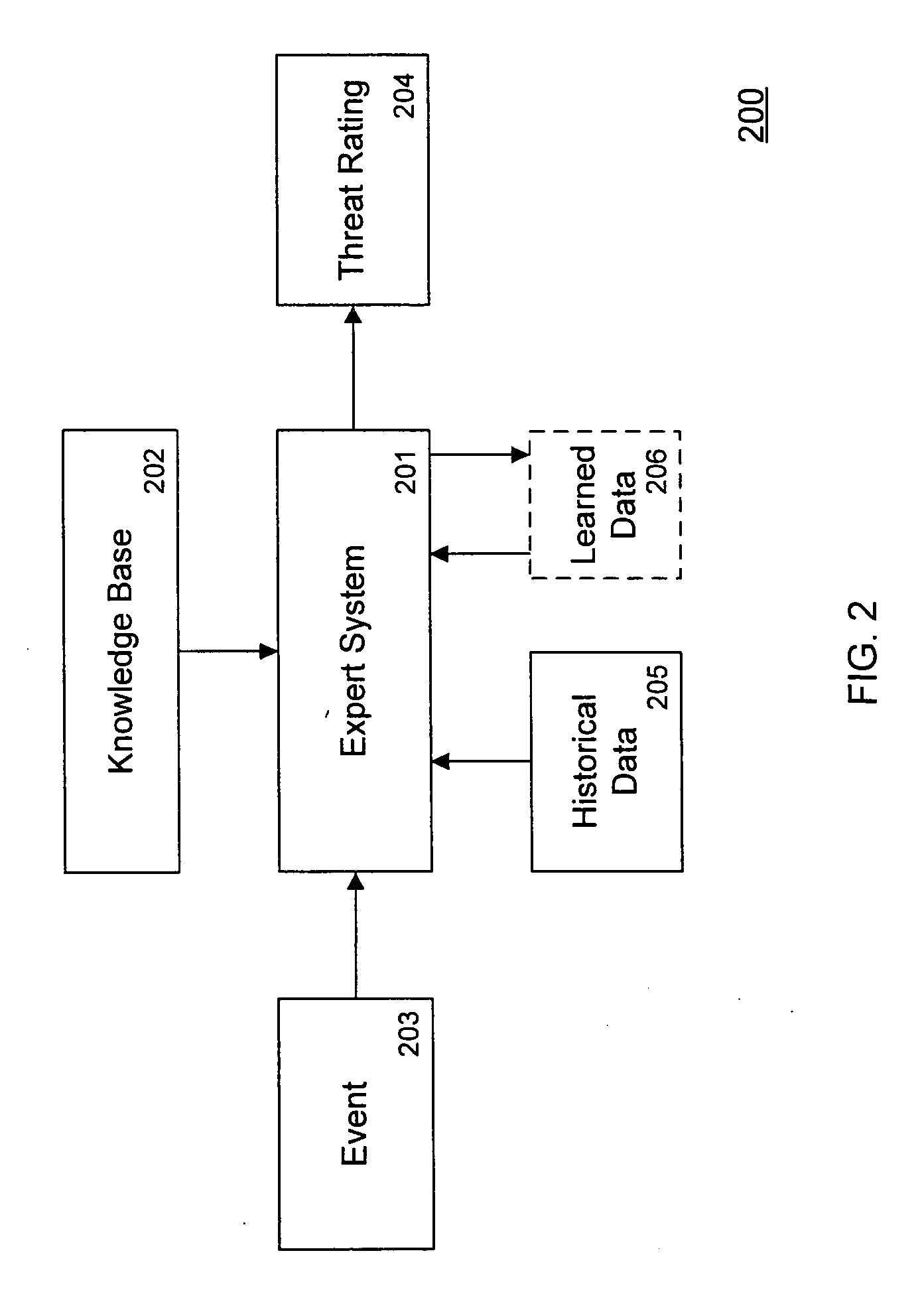Threat scoring system and method for intrusion detection security networks
a technology of intrusion detection and threat scoring, applied in the field of network security management, can solve the problems of increasing the danger of network systems relying on interconnectivity, affecting the true level of security threats, and security threats that are often dangerous to computer systems and data, so as to reduce or eliminate false positive results, reduce the effect of reducing the number of false positives, and reducing the risk of security threats
- Summary
- Abstract
- Description
- Claims
- Application Information
AI Technical Summary
Benefits of technology
Problems solved by technology
Method used
Image
Examples
Embodiment Construction
[0039] The present invention and various features and advantageous details thereof will now be described with reference to the exemplary, and therefore non-limiting, embodiments that are illustrated in the accompanying drawings. Descriptions of known programming techniques, computer software, hardware, network communications, operating platforms and protocols may be omitted so as not to unnecessarily obscure the invention in detail. It should be understood, however, that the detailed description and the specific examples, while indicating preferred embodiments of the invention, are given by way of illustration only and not by way of limitation. Various substitutions, modifications, additions and / or rearrangements within the spirit and / or scope of the underlying inventive concept will become apparent to those skilled in the art from this disclosure.
[0040] As network security threats continue to evolve and become more sophisticated each and everyday, it has become a constant struggle...
PUM
 Login to View More
Login to View More Abstract
Description
Claims
Application Information
 Login to View More
Login to View More - R&D
- Intellectual Property
- Life Sciences
- Materials
- Tech Scout
- Unparalleled Data Quality
- Higher Quality Content
- 60% Fewer Hallucinations
Browse by: Latest US Patents, China's latest patents, Technical Efficacy Thesaurus, Application Domain, Technology Topic, Popular Technical Reports.
© 2025 PatSnap. All rights reserved.Legal|Privacy policy|Modern Slavery Act Transparency Statement|Sitemap|About US| Contact US: help@patsnap.com



